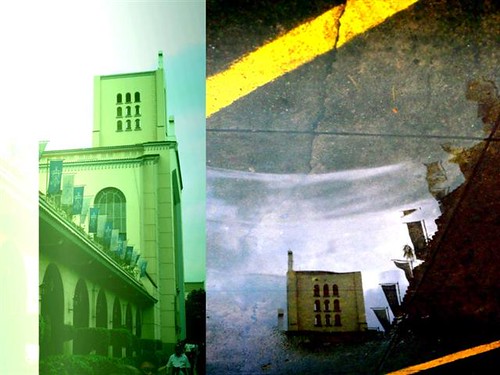
It may have been raining hard that day and the day before that. The skies were mostly composed of huge dark clouds and showed no sign of changing; or even letting the sun show its face...
Another low pressure area is releasing it's fury in Philippine soils. Typically, weather like this is gloomy. It makes you gloomy. But today is no other day. It's a special day dedicated to Our Lady of La Naval. No matter how dark the skies will be, trust that her radiance and magnificence will shine through. She is of course the Mother of God and the Queen of the Philippines, Our Lady of the Rosary La Naval de Manila.
“Nothing great is ever achieved without much enduring.”
~Santa Catalina de Sena
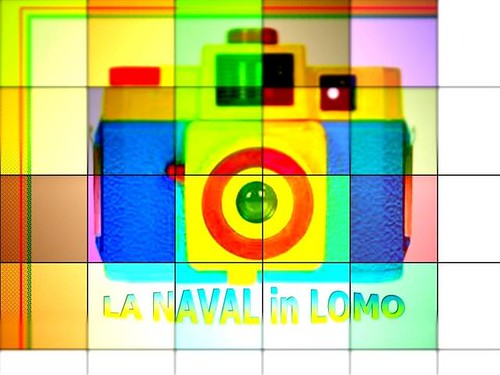
No matter what the weather is, our demonstration of faith and devotion continues. Outside it may be raining but in Sto. Domingo all we see are dazzling lights and captivating colors. The weather provided additional contrast bringing out the beauty of the occasion more. And what do you know all along the rains were just waiting for us to start and as the carroza's before Our Lady exits the church one by one, the rains stopped...like a curtain being lifted from the heavens.
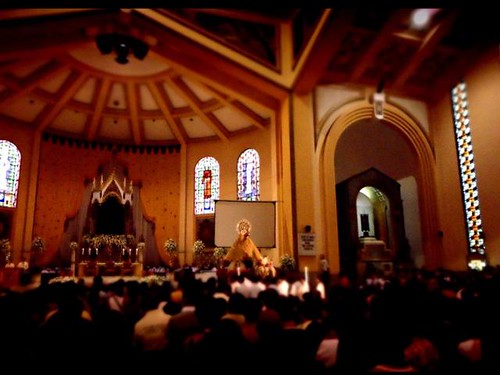
On This Day, O Beautiful Mother
On this day, O beautiful Mother,
On this day we give thee our love.
Near the, Madonna, fondly we hover,
Trusting thy gentle care to prove.
On this day we ask to share,
Dearest Mother, thy sweet care;
Aid us ere our feet astray
Wander from thy guiding way.
On this day we give thee our love.
Near the, Madonna, fondly we hover,
Trusting thy gentle care to prove.
On this day we ask to share,
Dearest Mother, thy sweet care;
Aid us ere our feet astray
Wander from thy guiding way.
On this day, O beautiful Mother,
On this day we give thee our love.
Near the, Madonna, fondly we hover,
Trusting thy gentle care to prove.
On this day we give thee our love.
Near the, Madonna, fondly we hover,
Trusting thy gentle care to prove.

From L-R: Santa Catalina de Sena; Santa Ynez de Montepulciano; San Alberto Magno; Santo Tomas Aquino; San Jacinto de Odrowatz
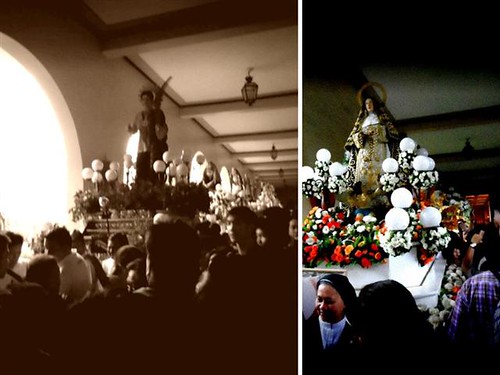
From L-R: San Lorenzo Ruiz; Santa Margarita de Ungria
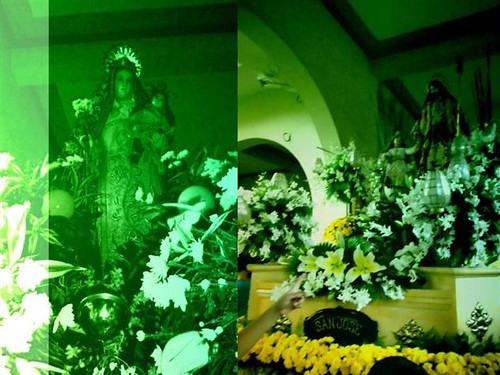
From L-R: Santa Ynez de Montepulciano; San Jose
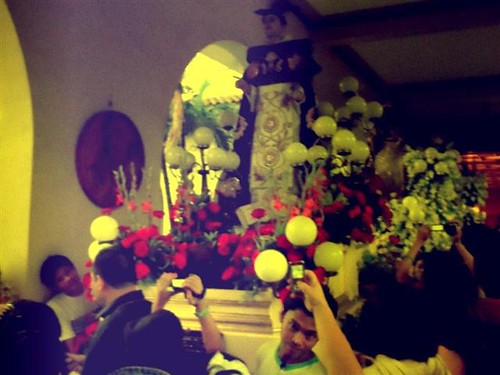
San Pedro Martyr
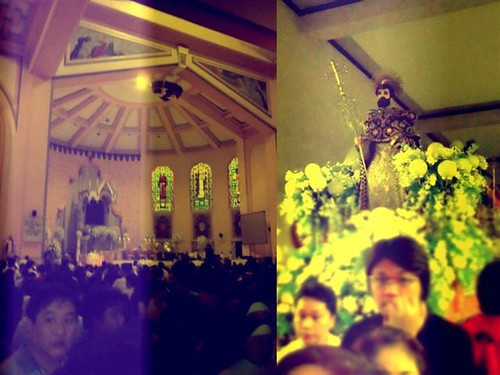
From L-R: Minutes before the start of procession; Santo Domingo de Guzman
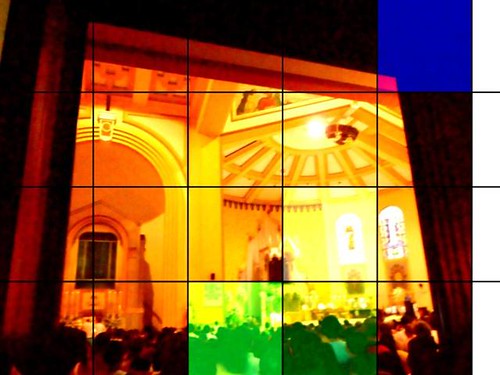
Sto Domingo's great hall
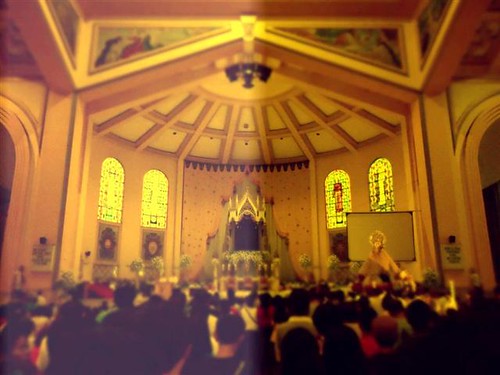
Our Lady of La Naval awaiting her turn in the procession
Queen of angels, deign to hear
Lisping children's humble prayer;
Young hearts gain, O virgin pure,
Sweetly to thyself allure.
Rose of Sharon, Lovely flow'r,
Beauteous bud of eden's bow'r;
Cherished lily of the vale,
Virgin Mother' Queen we hail.
Lisping children's humble prayer;
Young hearts gain, O virgin pure,
Sweetly to thyself allure.
Rose of Sharon, Lovely flow'r,
Beauteous bud of eden's bow'r;
Cherished lily of the vale,
Virgin Mother' Queen we hail.
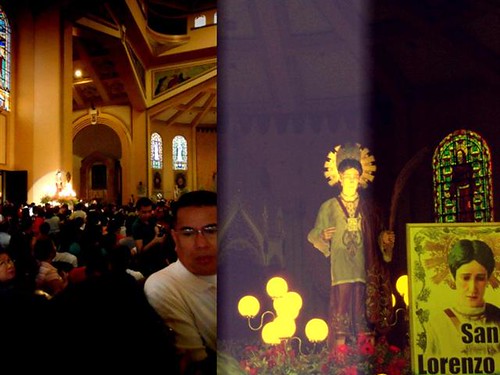
From L-R: San Lorenzo Ruiz entering Sto. Domingo's main hall; San Lorenzo Ruiz. the Filipino's first Saint.
"I am a Christian, and this I profess until the hour of my death and for God I shall give my life. Although I did not come to Japan to be a martyr, nevertheless as a Christian and for God, I shall give my life."
San Lorenzo Ruiz was a layman, with two sons and a daughter. He is recognized as the first Filipino Saint and Martyr. In 1636 Japan, Christians were persecuted and put to death. St. Lorenzo Ruiz together with his imprisoned companions were captured and were made to suffer to denounce their faith but they remained steadfast to the end. He was beatified by Pope John Paul II during the Papal visit to Manila on 18 February 1981. St. Lorenzo Ruiz was elevated to sainthood and received canonization on 18 October 1987 by His Holiness Pope John Paul II in Vatican City, Rome.
St. Lorenzo Ruiz on denouncing his faith:
"That I shall never do, because I am a Christian and I shall die for God, and for Him I will give many thousands of lives if I had them. And so do with me as you will please."
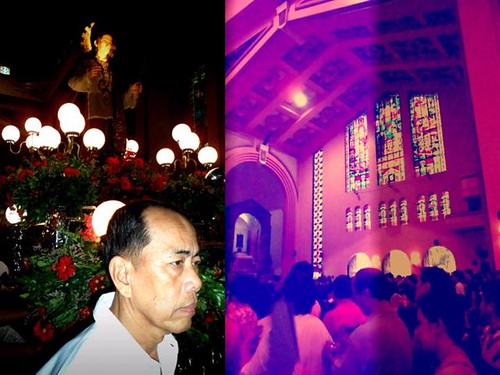
San Lorenzo Ruiz, pray for us!
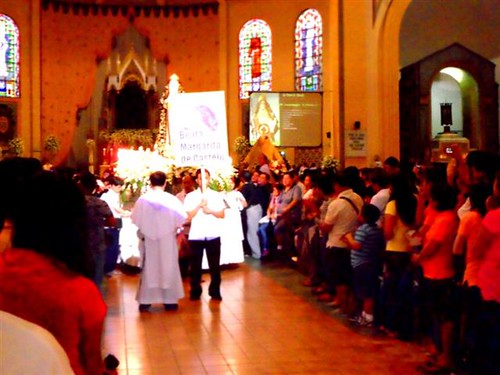
Intoducing Beata Margarita de Castello
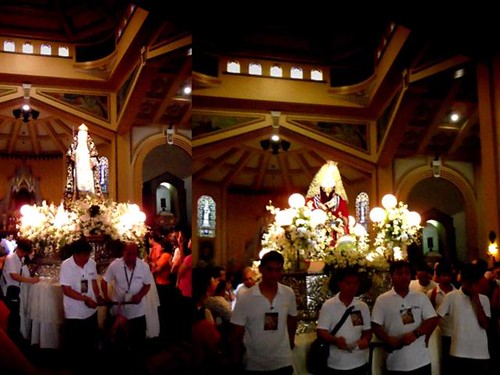
From L-R: Beata Margarita de Castello; Beata Juana de Aza
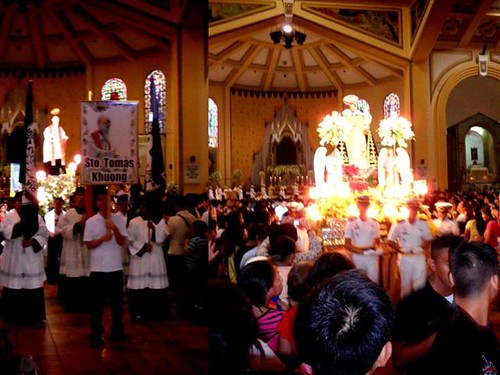
From L-R: Sto. Tomas Khuong; San Fernando de Capillas
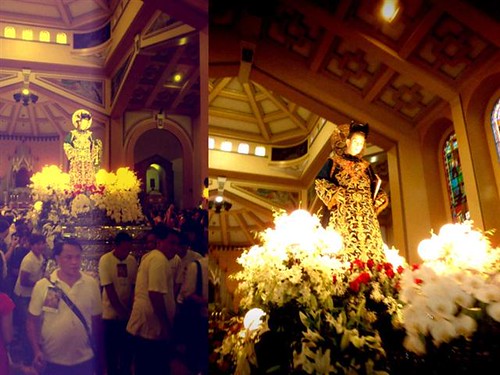
San Vicente Liem dela Paz

Santa Maria Magdalena de Nagazaki
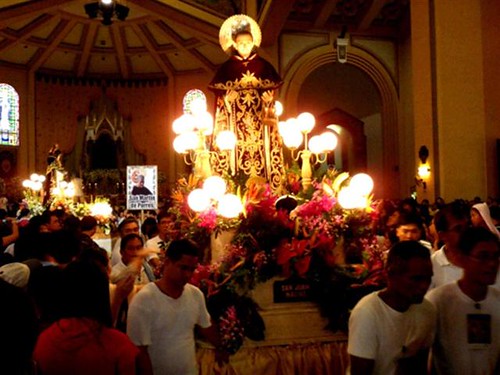
San Juan Macias
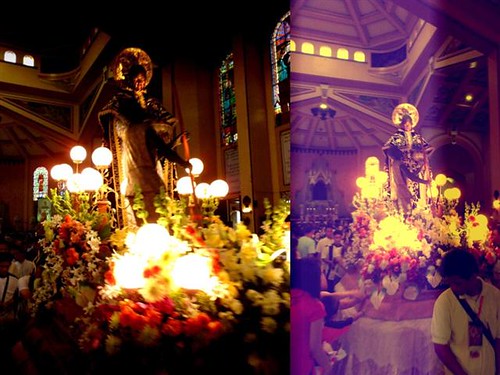
San Martin de Porres
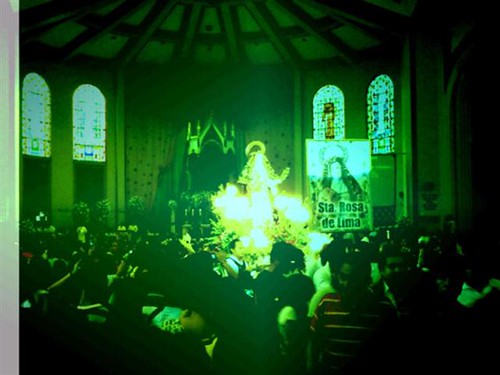
Introducing Sta. Rosa de Lima
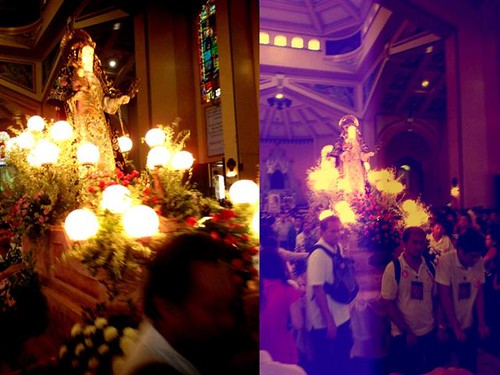
Sta. Rosa de Lima
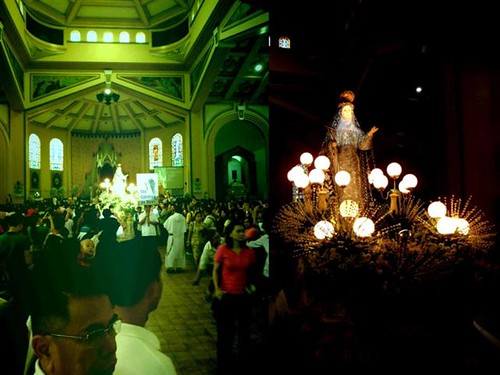
Santa Catalina de Ricci
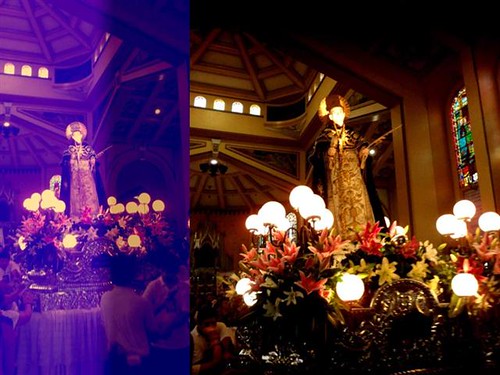
San Juan de Colognia
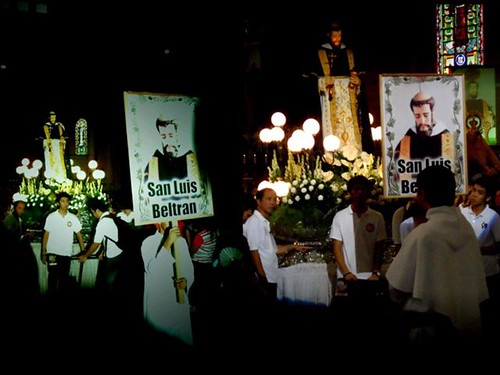
San Luis Beltran
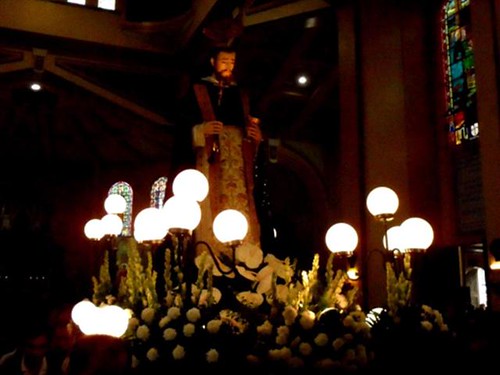
San Luis Beltran, Lamp of the New World, was a Spanish Dominican and one of the most outstanding preachers in Spain. His preaching was accompanied by miracles, and he is reported to have the gift of tongues. His life was noted for its austerity and penitence, and he seemed to have the power to touch even the most hardened sinners. With his zeal for preaching, he is said that at Santa Marta mountains (South America) where he had baptized 15, 000 people. In 1579, he was struck with a painful illness but continued his preaching. In 1580, while preaching in the cathedral of Valencia, he collapsed in the pulpit and had to bedridden until his death on October 9, 1581, at the age of 55. After 90 years, he was canonized by Pope Clement X in 1671 and is the patron saint of Colombia and the patron of the Dominican formation personnel and novitiates.
"For words without works never have power to touch or change hearts."
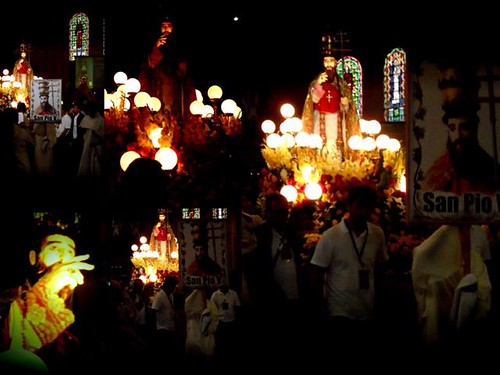
Entrance of San Pio V. The image appears to be blessing the devotees gathered at Sto. Domingo
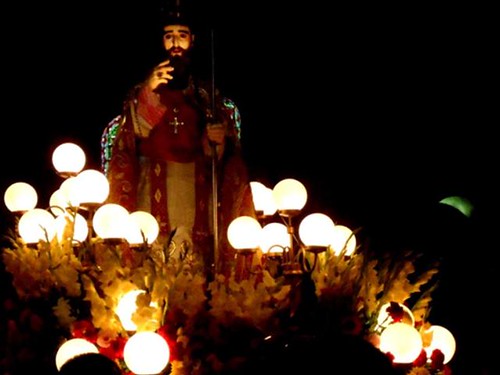
San Pio V (1504-1572) Italian, inquisitor, pope (1566-1572, 3rd Dominican pope), reformer, diplomat, great promoter of the rosary, canonized 1712.
"O Lord, increase my sufferings and my patience!"
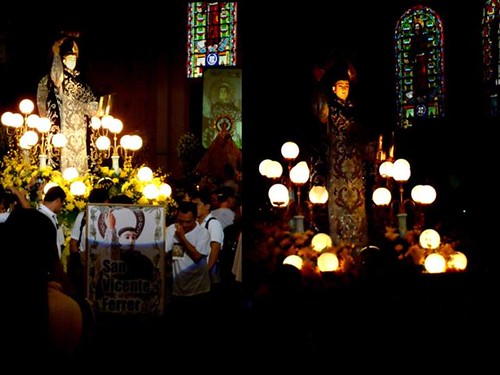
San Vicente Ferrer
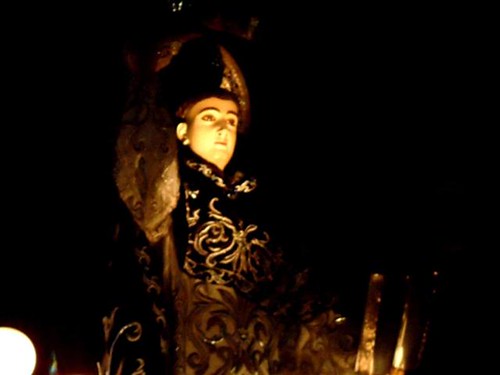
San Vicente Ferrer (1350-1419) Spanish, priest, celebrated itinerant preacher and ascetic, Church appointed patron of builders, canonized 1455.
"Whatever you do, think not of yourself, but of God."
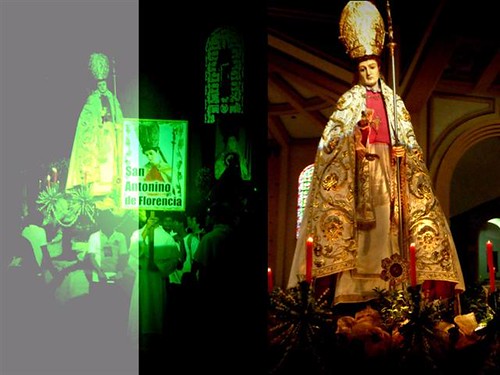
San Antonino de Florencia
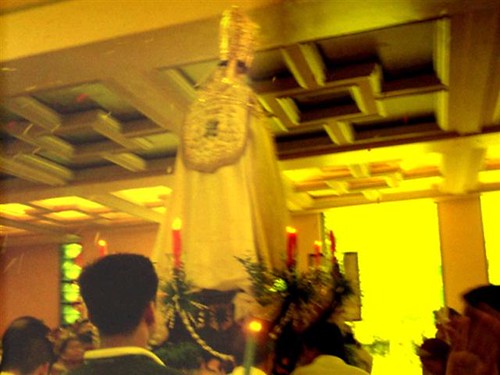
San Antonino in a "candle lit" carroza exiting Sto. Domingo
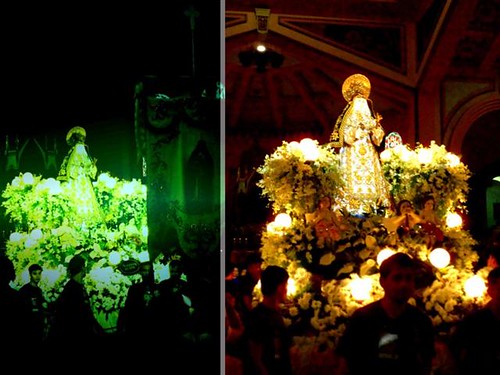
Santa Catalina de Sena
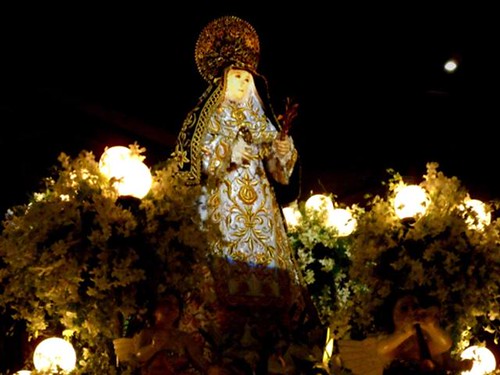
Santa Catalina de Sena (1347-1380) Italian, virgin, renowned mystic, stigmatist, diplomat, peacemaker, author of The Dialogue, second woman Doctor of the Church, Church appointed patroness of the Fraternities of Saint Dominic, co-patroness with St. Francis of Italy, patroness of Rome, nurses, fire prevention, canonized 1461.
“Be who God meant you to be and you will set the world on fire.”
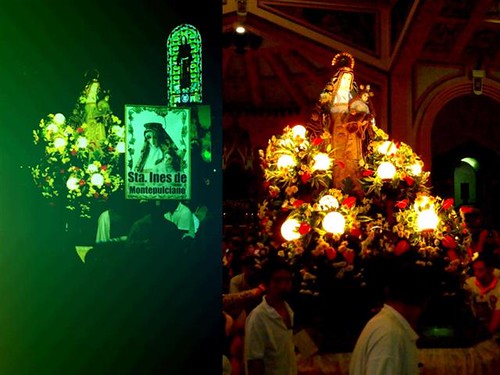
Santa Ynez de Montepulciano

San Alberto Magno
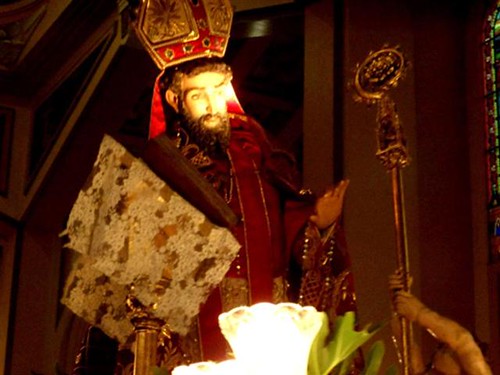
San Alberto Magno (1206-1280) German, Bishop of Ratisbon, now known as Regensburg, in S. Germany, theologian of renown, philosopher, scientist, diplomat, teacher, inventor, teacher of St. Thomas Aquinas, called great already in his lifetime, criss-crossed his diocese on foot and so nicknamed "Doctor Boots" by his contemporaries, "Universal Doctor" of the Church, Church appointed patron of scientists, medical technicians, proclaimed Doctor and thus equivalently canonized 1931.
It is by the path of love, which is charity, that God draws near to man, and man to God. But where charity is not found, God cannot dwell. If, then, we possess charity, we possess God, for "God is Charity" (1John 4:8)
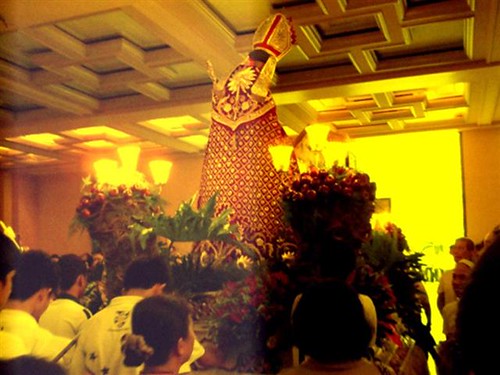
San Alberto exiting Sto. Domingo
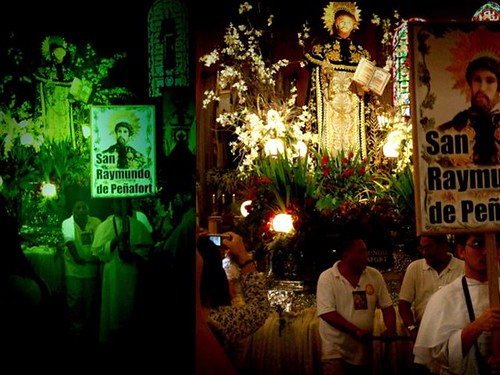
San Raymundo de Penafort
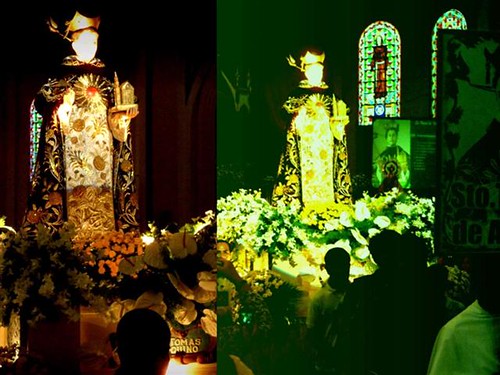
Santo Tomas Aquino
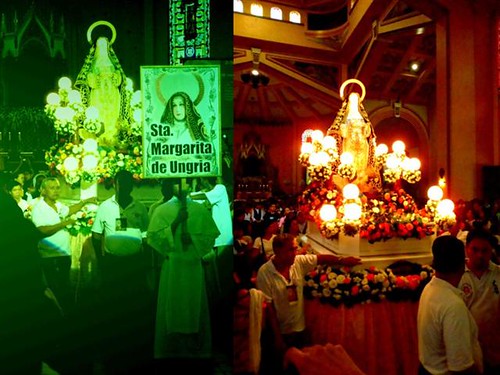
Santa Margarita de Ungria
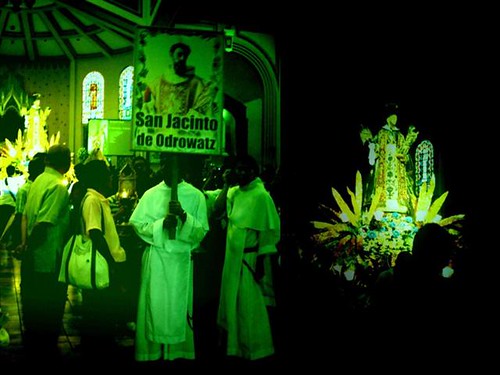
San Jacinto de Odrowatz
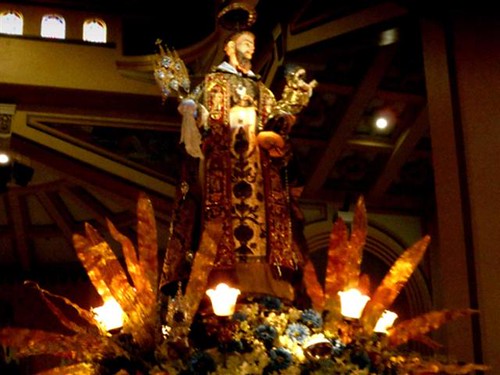
San Jacinto de Odrowatz (1187-1257) Polish, priest, brother of Bl. Ceslaus (July 17), one of first Dominicans, founder of the Polish Province, missionary to Slavs and Nordics, Church appointed patron of Poland, canonized 1594.
Saint Hyacinth is known to have performed numerous miracles. The one miracle that has been most associated with him was the result of the Tartars siege of the city of Kiev. Hyacinth gained a child-like and tender devotion to the Mother of God from Saint Dominic. To her he attributed his success, and to her aid he looked for his salvation. When Hyacinth was at Kiev, the fierce Tartars sacked the town. Hyacinth was celebrating the Mass and did not know of the onslaught and danger until the Mass ended. Without waiting to unvest, he took the ciborium in his hands and was fleeing the church. It is recorded that as he passed by an statue of Mary he heard a voice say, "Hyacinth, my son, why dost thou leave me behind? Take me with thee and leave me not to mine enemies." Although the statue was made of heavy alabaster, Hyacinth took it in his arms and carried it away along with the ciborium with the Holy Eucharist. It is for this miraculous moment that Saint Hyacinth is most often depicted. From the Story of St. Hyacinth
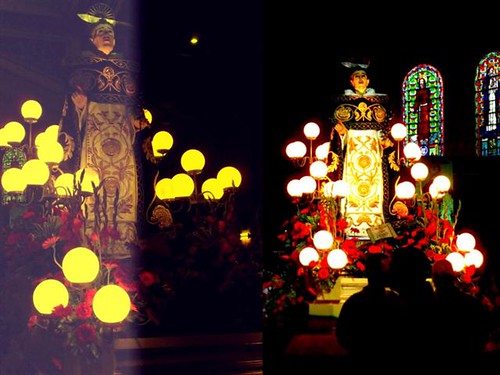
San Pedro Martyr
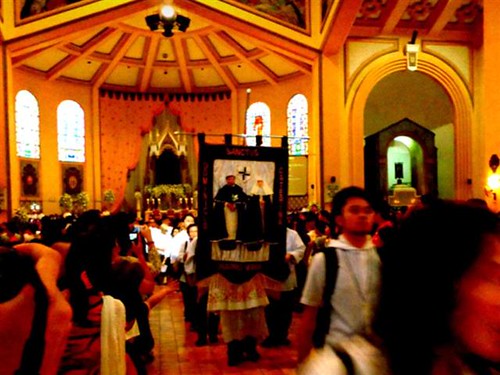
The Dominican Order

Santo Domingo de Guzman, founder of the Dominican Order
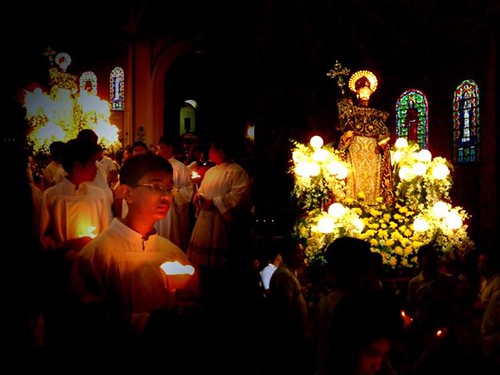
Sto Domingo initiated the devotion to the Holy Rosary after Our Lady appeared to him
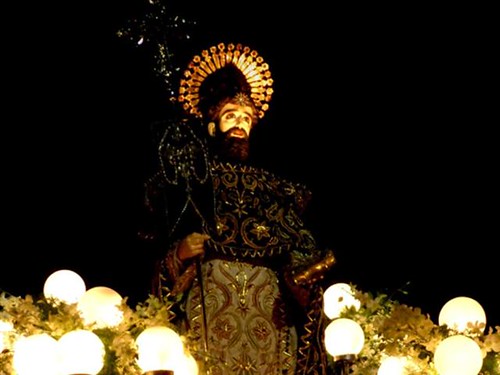
Santo Domingo (1170-1221) "The Apostolic Father", saint, Spanish, priest, scholar, ascetic, mystic, apologist, innovator, miracle-worker, laid foundation for the Rosary, founder of the Order of Preachers, eloquent preacher.

Intoducing San Jose
"St. Joseph was an ordinary sort of man on whom God relied to do great things. He did exactly what the Lord wanted him to do, in each and every event that went to make up his life."
~ Blessed Josemaria Escriva
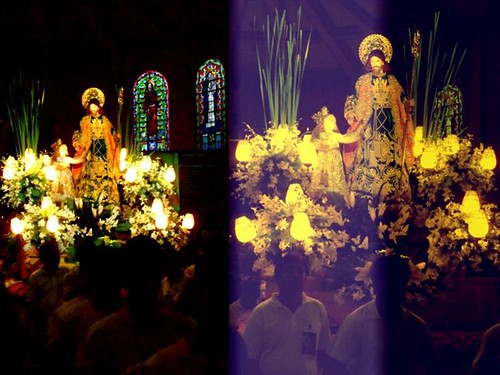
St. Joseph, beloved spouse of Mary, the earthly Father of Jesus and the Patron Saint of the Universal Church
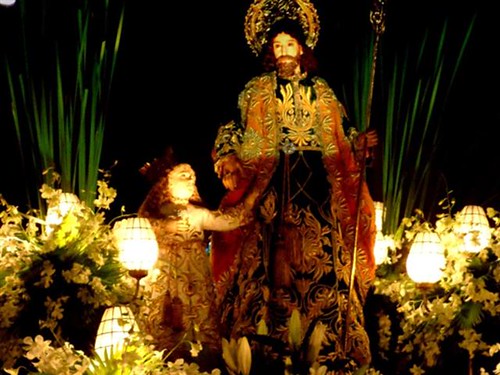
Relatively little is known about the life of St. Joseph except for what is written in the Gospels of Matthew and Luke. The genealogy of both Gospels place him in the line of David. Though St. Joseph was descended from royalty, it was not a title to rank or riches. Everything known about Joseph suggests he was poor, for example, the offering of only two turtle doves at the Temple. Joseph's family belonged to Bethlehem of Judea, but he had moved to Nazareth in Galilee to take up the occupation of a builder. There is no reason to suggest he was older than a normal age of 20-24 when he wed Mary, who would have been 15-20. Matthew mentions the annunciation to Joseph of Mary's conception, the visit of the Magi, the flight to Egypt and the return to Nazareth. Luke fills in the details of the birth of Christ, the Presentation and the temporary loss of Jesus in Jerusalem at the age of twelve. After that, Joseph disappears from the pages of the Gospel. Since he is not mentioned during the ministry of Jesus or at the Passion, it is assumed that he had already died by that point. From the Life of St. Joseph
Our Lady of the Most Holy Rosary, La Naval de Manila
Ave Maria, gratia plena: Dominus tecum, benedicta tu in mulieribus, et benedictus fructus ventris tui, Iesus. Sancta Maria, Mater Dei, ora pro nobis peccatoribus, nunc et in hora mortis nostrae. Amen.
On April 9, 1662, after studying all the written and oral testimonies of the participants and eyewitnesses, the Ecclesiastical Council who studied the unusual aspects of the five naval battles declared that the victories were, taken from Our Lady of the Rosary:
Granted by the Sovereign Lord through the intercession of the Most Holy Virgin and devotion to her Rosary, that the miracles be celebrated, preached and held in festivities and to be recounted among the miracles wrought by the Lady of the Rosary for the greater devotion of the faithful to Our Most Blessed Virgin Mary and Her Holy Rosary.
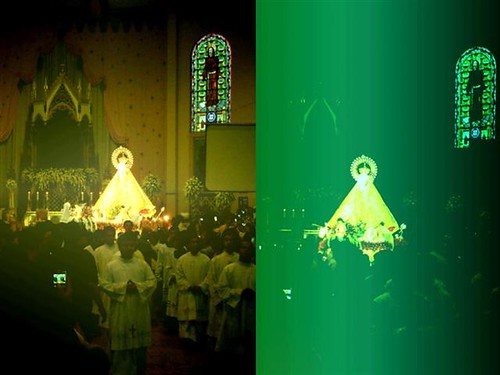
Finally, Our Lady of La Naval...

In-vain the flow'rs of love we bring,
In-vain sweet music's note we sing,
If-contrite heart and lowly prayer,
Guide-not our gifts to thy bright sphere.
In-vain sweet music's note we sing,
If-contrite heart and lowly prayer,
Guide-not our gifts to thy bright sphere.
On this day, O beautiful Mother,
On this day we give thee our love.
Near the, Madonna, fondly we hover,
Trusting thy gentle care to prove.
On this day we give thee our love.
Near the, Madonna, fondly we hover,
Trusting thy gentle care to prove.
Fast our days of life we run,
Soon the night of death will come;
Tower of strength in that dread hour,
Come with all thy gentle power.
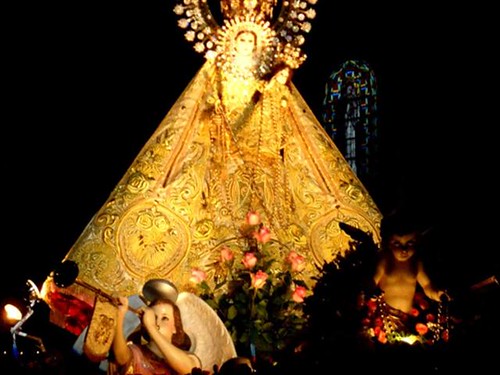
Hail, Mary, full of grace; the Lord is with thee; blessed art thou among women, and blessed is the fruit of thy womb, Jesus. Holy Mary, Mother of God, pray for us sinners, now and at the hour of our death. Amen.
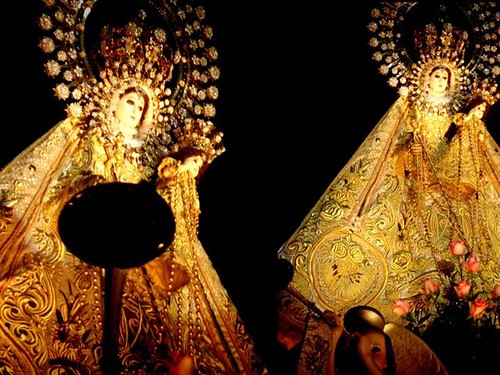
Our Lady of the Most Holy Rosary
The Five Joyful Mysteries
The Annunciation
The Visitation
The Nativity
The Presentation
The Finding in the Temple
The Presentation
The Finding in the Temple
The Five Luminous Mysteries
The Baptism of Jesus in the Jordan River
The Wedding Feast at Cana
The Proclamation of the Kingdom of God
The Transfiguration
The institution of the Eucharist
The Five Sorrowful Mysteries
The Agony in the Garden
The Scourging at the Pillar
The Crowning of Thorns
The Carrying of the Cross
The Crucifixion
The Five Glorious Mysteries
The Resurrection
The Ascension
The Descent of the Holy Spirit
The Assumption
The Crowning of the Blessed Virgin
The Crowning of the Blessed Virgin
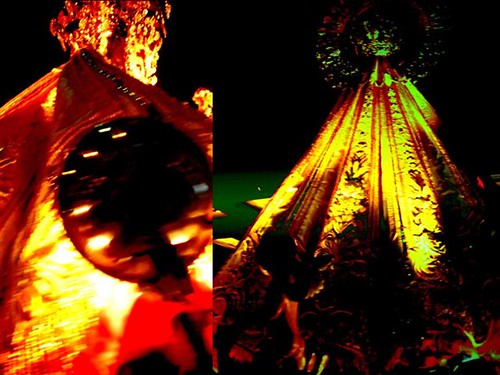
Viva!
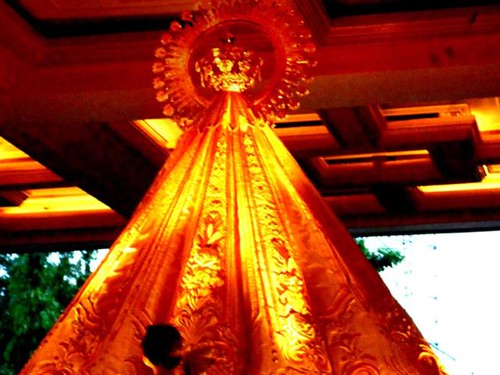
La Naval's infamous silhouette...
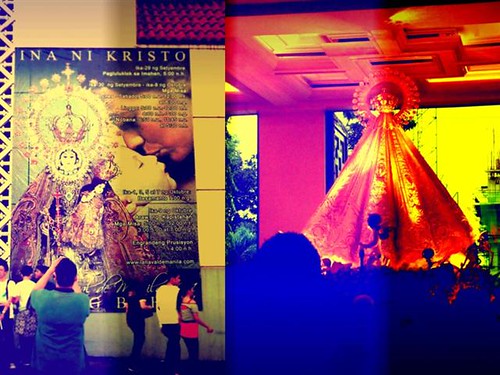
What's happening in and outside Sto. Domingo's walls...La Naval exiting the church...

As La Naval exits, the Dominican Saints are a block away from Sto. Domingo...students prepare for the return of the images.
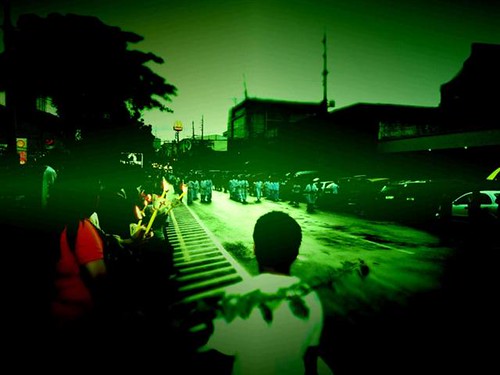
The Start of the Procession
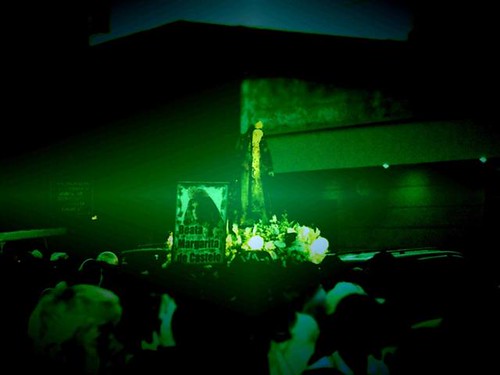
Beata Margarita de Castello (1287-1320) Italian, abandoned as a child because of blindness and severe, unsightly handicaps, and so patron of pro-life causes, virgin, mystic, instructor of children.
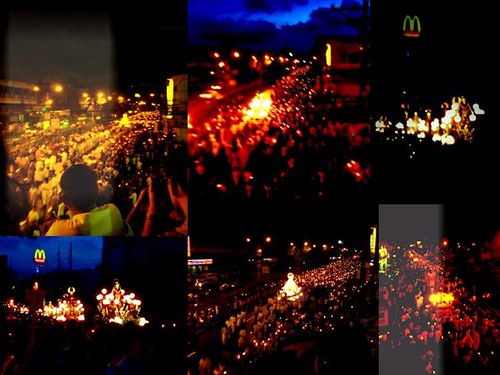
Faith lighting up Quezon Avenue
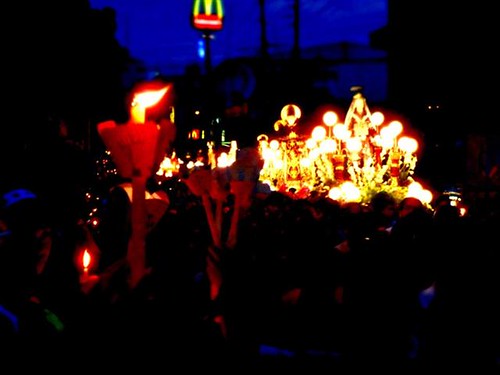
"The Procession of All Processions, La Naval's Solemn Procession"
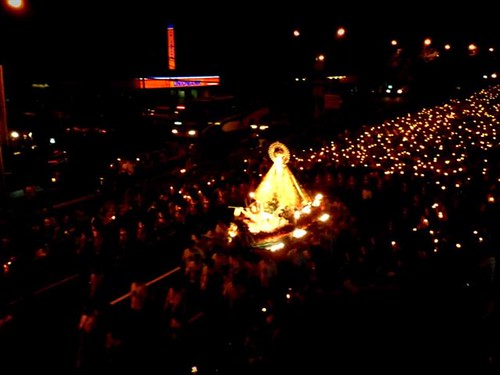
Hail, holy Queen, Mother of mercy, our life, our sweetness and our hope. To thee do we cry, poor banished children of Eve. To thee to we send up our sighs, mourning and weeping in this valley of tears. Turn, then, most gracious advocate, thine eyes of mercy toward us, and after this, our exile, show unto us the blessed fruit of thy womb, Jesus. O clement, O loving, O sweet Virgin Mary.
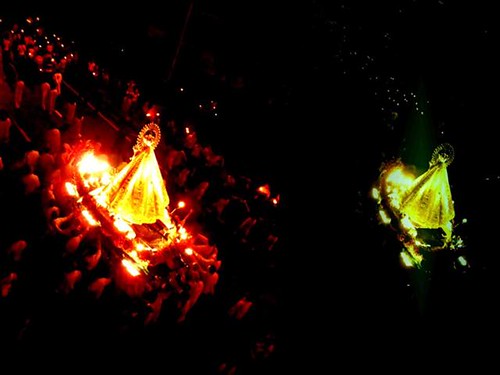
Stella Maris
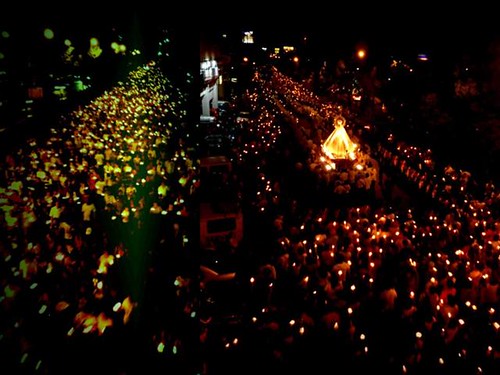
The weather may have dampen the surroundings but in the hearts of every devotee burns a light of hope, love and faith together forming a sea of lights wherein Our Lady gracefully traverses as she blesses and joins her people in prayer and in praise to God.

Our Lady of the Rosary, La Naval de Manila, Ora Pro Nobis!

May I clarify that as the image of Nuestra Senora exits La Naval, the Dominican Saints are already arriving or is it that the Dominican Saints have reached one block before the La Naval exited?
ReplyDelete